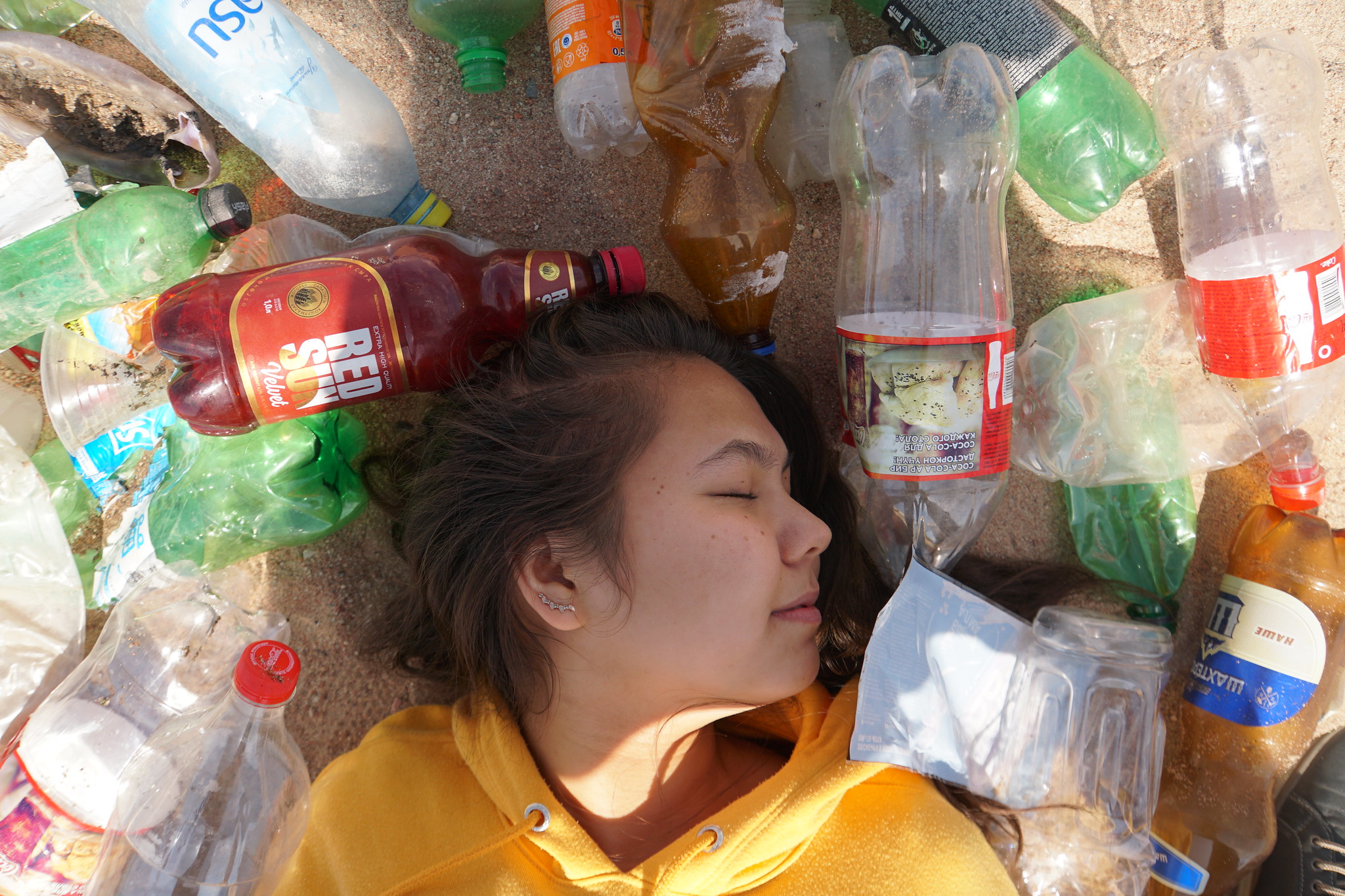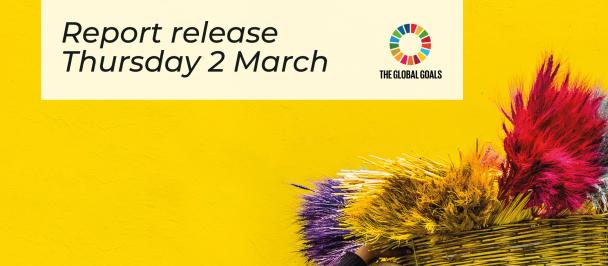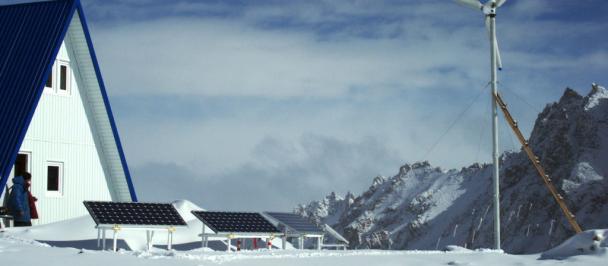“-- I moved to a village near to Bishkek because of several reasons. My mom has been coughing a lot. We lived right in the city centre. We felt the dust, noise of the street. With the deterioration of air quality, I decided to move from Bishkek to ensure better life quality for my mom and my family. Now when I drive from my new place into Bishkek, I can see this grey and sometimes black veil over the Bishkek”, said Gulaiym Ailchy.
The veil that Gulaiym sees is smog, caused by industrial pollution, thousands of coal-fired residential houses warming systems, and large-scale coal-fired power plants. Most of the heating energy in Bishkek comes from the burning of fossil fuels, which causes extreme health hazards to humans through green-house gasses resulting from the burning.
Today Kyrgyzstan faces many environmental challenges. Many people pay a high price for the so-called “brown” economic growth causing side effects, including the degradation of natural resources due to over-exploitation and ineffective management of natural resources, changing climate, air and water pollution, poor waste management, and inefficient agriculture, water and energy systems. A recent global assessment found that about 60% of the world’s ecosystem services – which provide us with food, water, fuel, shelter, and medicine and sustain our broader societies and economies – are either degraded or used unsustainably. Conservation and related remediation efforts are not yet keeping up with unsustainable economic activities.
These factors affect the lives and livelihoods of people and communities, especially more vulnerable groups. Environmental determinants of health are having a significant and increasing impact on disease and illness in many countries. According to the World Bank’s global assessment of the level of health, the Kyrgyz Republic is ranked 101st out of 145 countries.
Air and water pollution have become the greatest environmental threat to people’s health. According to the Health and Pollution Action Plan of 2019, air and water pollution causes 4,500 premature deaths each year, representing almost 14% of all annual deaths. The economic cost is significant, causing annual productivity losses estimated between $24m and $31m. Chronic obstructive pulmonary disease, coronary heart disease, acute lower respiratory tract disease and lung cancer are all caused to a large degree by air and water pollution.
Environmental degradation and pollution can also have a negative impact on the country’s economic development over the medium to longer-term as sustainable growth depends to a large degree on the way natural resources are managed. There are many reasons why current economic growth patterns need to be decoupled from such environmental degradation.
· Land degradation in Kyrgyzstan is largely a result of unsustainable use and management of agricultural land, over-grazing, and inefficient irrigation and water management systems. Today, about one-quarter of all pastures are moderately or severely degraded.
· Deforestation is another main cause of the loss in biological diversity. The country has seen a steady increase in livestock numbers as a result of efforts to increase herd size. Unregulated and unsystematic grazing, however, have devastated pasture ecosystems, which make up 40% of the total territory of the country and 85% of all agricultural land.
· Soil fertility is deteriorating as a result of excessive land use, lack of crop rotation, and insufficient remediation activities. More than 160,000 hectares, or nearly 14% of the land faces varying degrees of salinization, while some 714,000 ha, or 59.3% of the total arable land area, are subject to water erosion.
· Water resources are threatened by chemical and organic pollution, which is mainly associated with mismanaged landfills and waste from mining enterprises. Compared to other countries, the pollution caused by CO2 from Kyrgyzstan’s manufacturing sector and it material resource consumption is relatively high.
· Air pollution in the country’s major cities is an acute issue. In 2017, air pollution from stationary sources was 49 thousand tons, which is 36% higher than air pollution generated in 2011. The largest pollutant emissions come from thermal power plants (67%), the manufacturing sector (27%), and the mining sector (6%). These three sectors together emit about 94.4% of all pollutants into the atmosphere. The main sources of air pollution in Bishkek and Osh are thermal power plants and transport systems.
Many of these environmental challenges will also be exacerbated by the impact of the changing climate in Kyrgyzstan and the region. As global temperatures increase, Kyrgyzstan and its neighbors will face more extreme weather events and climate change that have the potential to affect all economic sectors. For these reasons, greater efforts are also need to mitigate harmful green-house gas emissions and adapt to the short-and long-term changes that are unavoidable.
A New Road to Greater Human Development and more Inclusive, Environmentally Sustainable Economic Growth
At the same time, the solutions needed to respond to these environmental, social and economic challenges offer an opportunity for Kyrgyzstan to chart a course along a more sustainable pathway of development that delivers benefits to all social groups and economic sectors. The transition to a more inclusive, green economy offers an opportunity not only to reverse negative environmental trends; it can also be used to generate new employment options, reduce household and corporate costs, while driving new forms of investments and environmentally sustainable forms of growth. Inclusive green economy approaches are designed to shift policies and incentives in ways that redirect public and private financing towards economic activities that reduce environmental degradation, help to mitigate and adapt to climate change, and ensure a just transition for workers and business engaged in “browner” economic activities. For the reasons, green economy approaches are key to achieving the SDGs and Paris Agreement.
Kyrgyzstan has expressed its commitment to use inclusive green economy approaches to leverage these opportunities as it implements the country’s National 2040 Sustainable Development Vision and at the same time accelerates progress on the Sustainable Development Goals (SDGs). It has already emerged as a leader in Central Asia by establishing a strong national policy framework for its transition to a more inclusive green economy (IGE). In June 2018 the Concept “Kyrgyzstan is a country of the green economy” was adopted by the Jogorku Kenesh. This Concept serves as the IGE roadmap for the country and lays the foundation for reforms and innovations in several critical IGE sectors. These include the following priorities and cross-cutting themes: green agriculture, green industry, green energy, low carbon and environmentally friendly transport, sustainable tourism, green cities, municipal waste management, sustainable finance, fiscal incentives, and sustainable public procurement.
IGE principles have already been integrated in to the substance and monitoring system of the country’s long-term 2040 Vision. Just this week the Kyrgyzstan’s President has also signed the Law ratifying the Paris Agreement within the UN Framework Convention on Climate Change. And the National Green Economy Programme is expected to be approved shortly.
The country’s success in establishing such as strong policy framework has been made possible in part with support provided by UNDP together with UNEP, UNDIO, ILO and UNITAR through the global One-UN Partnership for Action on Green Economy (PAGE) and complementary programmes such as the UNDP Biodiversity Finance initiative.
Policies for Green Jobs and Regional Development
PAGE is one of the UN System’s principal responses to the Rio+20 Conference calling for the international community to assist interested countries in developing, adopting and implementing IGE policies and strategies. It is designed to support countries to transform their economies to eradicate poverty, increase jobs and social equity, strengthen livelihoods and environmental stewardship, and sustain growth in line with SDG-aligned national priorities. These include SDG 8 on sustained, inclusive and sustainable economic growth, full and productive employment and decent work for all, and SDG 12 on sustainable consumption and production.
With the financial and technical support of the European Commission, Germany, Finland, Norway, South Korea, Sweden and Switzerland, PAGE has been working closely with the Government of Kyrgyzstan and other national and international partners since 2016. In addition to the IGE policy frameworks described above, PAGE continues to work with such institutions as GIZ, OECD, OSCE, IFC, WB and funding partners to strengthen priorities such as long-term economic planning through advanced IGE modeling; innovative sustainable financing with the banking sector; green jobs and green industry strategies; agricultural subsidies; training and capacity building for civil society and the public and private sectors; and exchanges with IGE experts from Armenia, Kazakhstan, Mongolia, and China;
This week, the Ministry of Economy is organizing the fifth annual Green Economy Week to discuss achievements, challenges, lessons learned and new opportunities for implementing the country’s IGE priorities, with a concluding Forum on “Green Economy - Strong Regions - Sustainable Development”. More than 300 representatives, including high level officials and policy makers will discuss the government’s IGE policies and practices, including a focus on small and medium-size business and initiatives designed to strengthen IGE at the regional level.
To conclude, let me share a quote from the UN Secretary-General: "The green economy is the future. It fosters prosperity, creates decent work, addresses root causes of conflict and contributes to the full enjoyment of all human rights”. Through the collective support provided to Kyrgyzstan by UNDP, sister UN agencies and our partners we are working to fully leverage the transformational potential of IGE approaches that the Secretary General has described. By working together through innovative partnerships such as PAGE we are helping to ensure that everyone benefits from the transition to a greener economy - including Gulaiym, her mother and all families and communities in Kyrgyzstan.

 Locations
Locations


